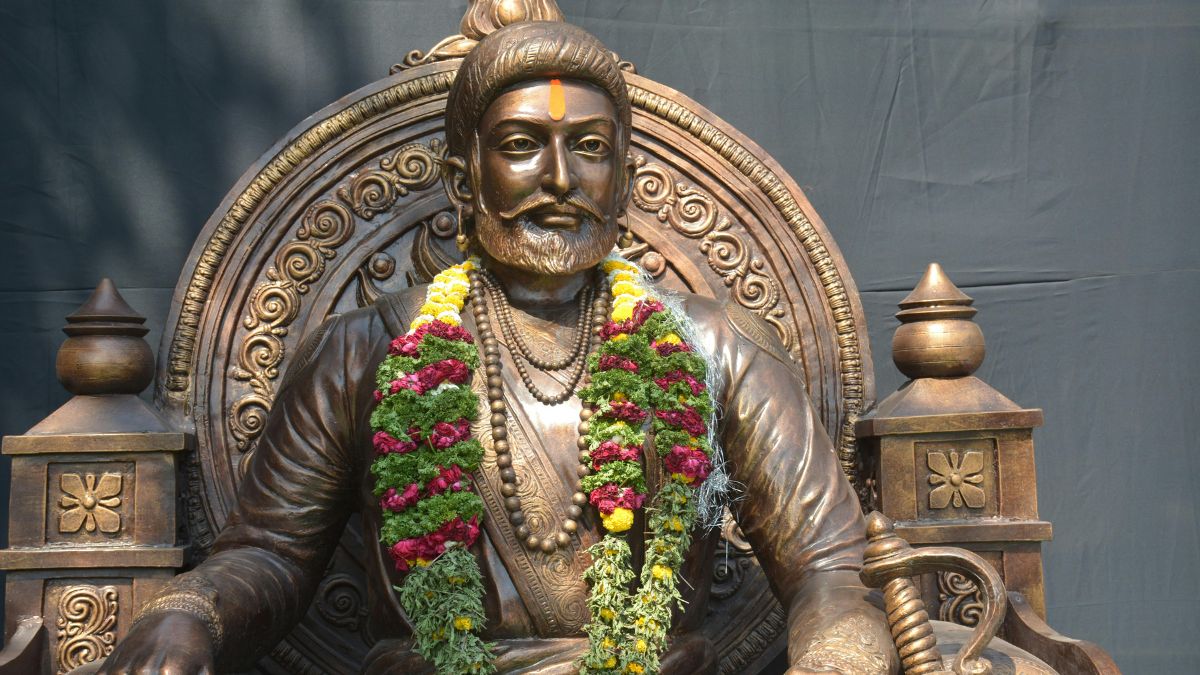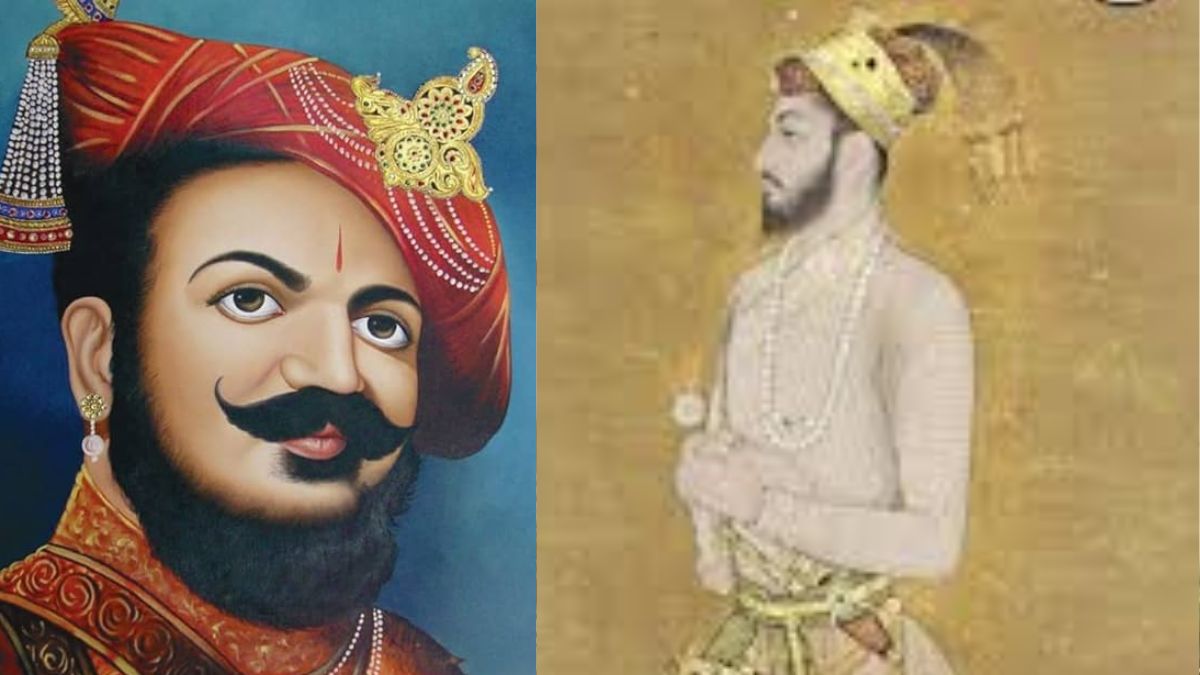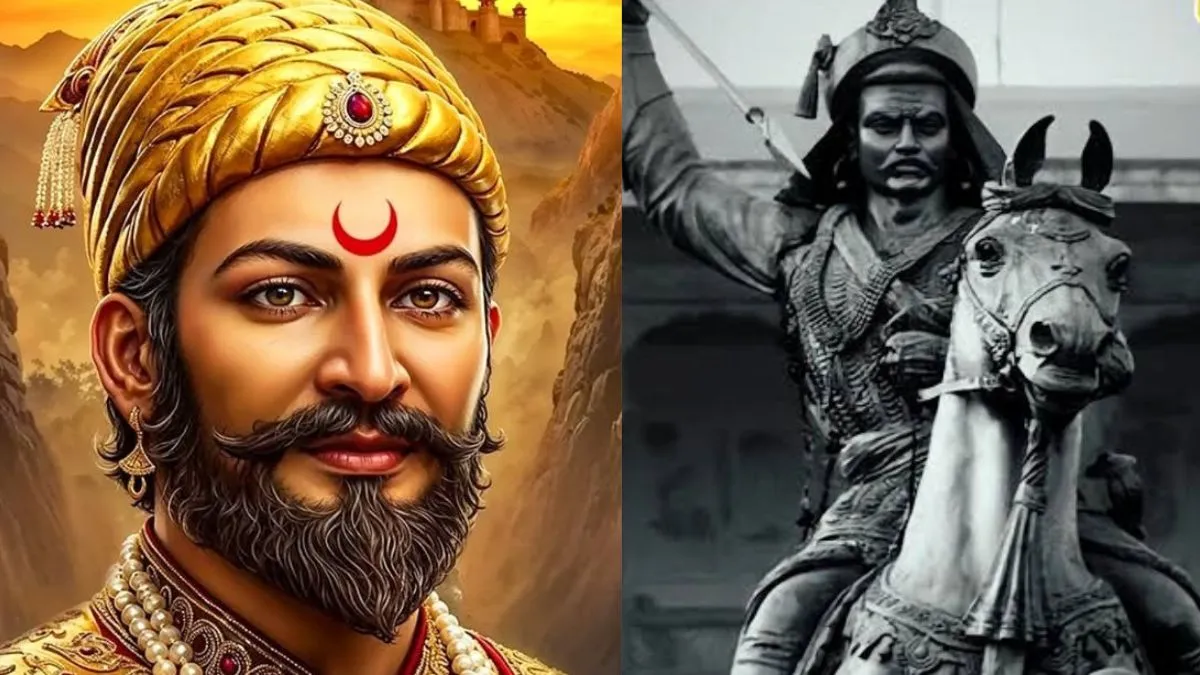- By Aditi Priya Singh
- Wed, 19 Feb 2025 11:41 AM (IST)
- Source:JND
Top 10 Most Powerful Maratha Warriors In Indian History: The Marathas were among the most powerful warriors in Indian history, known for their bravery, military strategies, and fierce resistance against the Mughals and British. They established a huge empire that ruled the Indian subcontinent for ages under the leadership of fabled individuals like Chhatrapati Shivaji Maharaj. Through strategic alliances and tactical warfare, these warriors from courageous monarchs like Sambhaji Maharaj to outstanding commanders like Peshwa Bajirao expanded and safeguarded their country. Generations after generations are still motivated by their example of bravery, selflessness, and leadership.
Here are the top 10 most powerful Maratha warriors who influenced Indian history are listed below.
1. Chhatrapati Shivaji Maharaj (1630 – 1680)
 Chhatrapati Shivaji Maharaj (Image: Canva)
Chhatrapati Shivaji Maharaj (Image: Canva)
Chhatrapati Shivaji Maharaj, the founder of the Maratha Empire was born in 1630 to Shahaji Bhosale and Jijabai. He used to live in Satara, the Western Deccan Plateau region, presently called Maharashtra. Shivaji opposed Adil Shahi and Mughal control by establishing a powerful military and employing guerrilla warfare techniques. At Raigad Fort, he was crowned king in 1674. Shivaji died of his illness in 1680.
2. Tana Ji Malusare (1626-1670)
Tana Ji was a trusty commander of Shivaji Maharaj who led the valiant effort to seize Kondhana Fort (now Sinhagad) in 1670. He died in the battle, despite his valiant attempts. His sacrifice is honoured in our hearts. Ajay Devgan and Kajol starring 2020 film Tanhaji is based on his life.
3. Sambhaji Maharaj (1657 – 1689)
 Sambhaji Maharaj statue(Image: Instagram)
Sambhaji Maharaj statue(Image: Instagram)
Shivaji Maharaj had two sons, Rajaram Maharaj and Sambhaji Maharaj. In 1681, Sambhaji Maharaj took the kingdom as the eldest son of Shivaji Maharaj and Maharani Saibai. He was a valiant fighter who battled the Portuguese, Siddis and Mughals. When Aurangzeb caught him in 1689, he refused to convert to Islam and was mercilessly put to death. Vicky Kaushal’s recent release film “Chhava” is based on Sambhaji Maharaj, the great son of Shivaji Maharaj only.
4. Shahuji Maharaj (1682 – 1749)
Shahuji, the grandson of Shivaji Maharaj and the son of Sambhaji Maharaj spent several years in Aurangzeb's jail. After Aurangjeb’s death, he was released by Bahadur Shah. He claimed the Maratha throne right away and challenged his aunt Tarabai and her son Rajaram Maharaj, brother of Sambhaji and younger son of Shivaji Maharaj. Later, by selecting the Peshwas after his release, Shahuji significantly contributed to the growth of the Maratha Empire. He governed effectively until 1749 when he passed away.
5. Balaji Vishwanath Bhat (1662 – 1720)
Balaji Vishwanath Bhat, who was born in 1662, was Shahu Maharaj's first Peshwa of the Maratha Empire. By stabilising finances and establishing important connections, he bolstered the empire. He died of his illness in 1720.
6. Peshwa Bajirao I (1700 – 1740)
 Peshwa Bajirao I statue (Image: Canva)
Peshwa Bajirao I statue (Image: Canva)
After Balaji Vishwanath’s death, his son Peshwa Bajirao Ballal Bhat was appointed as the next Peshwa by Shahuji Maharaj. Bajirao I was born in 1700 and was a brilliant general who expanded the Maratha Empire with numerous successful campaigns. He never lost a single battle. He died in 1740 due to illness while in camp at Raverkhedi. The Bollywood movie Bajirao Mastani, starring Ranveer Singh is based on his life only.
7. Balaji Baji Rao (Nana Saheb 1) (1720 – 1761)
 Balaji Baji Rao son of Peshwa Bajirao (Image: Amazon and Instagram)
Balaji Baji Rao son of Peshwa Bajirao (Image: Amazon and Instagram)
After Peshwa Bajirao’s sudden death in 1740, Nana Saheb, also known as Balaji Baji Rao was the son of Peshwa Bajirao Ballal I, took the name Peshwa. Despite his significant contribution to the empire's growth, he lost the Third Battle of Panipat (1761). Devastated, he died the same year. Raghunath Rao was Balaji Rao's younger brother.
8. Nana Saheb Peshwa II (1796 – 1857)
 Nana Saheb Peshwa 2 (Image: Facebook)
Nana Saheb Peshwa 2 (Image: Facebook)
Born in 1796, Nana Saheb 2 was the adopted son of Bajirao 2 (son of the former Peshwa Raghunathrao and his wife Anandibai) and the last Peshwa. Nana Saheb was a pivotal figure in the uprising against British authority in 1857. He was the leader of the Kanpur rebellion, which fought for Indian independence. He vanished inexplicably after the uprising, so no one knows what happened to him.
9. Tatya Tope (1814 – 1859)
Tatya Tope was a pivotal figure in the 1857 uprising, fighting alongside Nana Saheb and Rani Lakshmibai against the British. Following the fall of Jhansi, he carried on with guerrilla warfare until his capture and execution in 1859.
10. Chimaji Appa (1707 – 1740)
Chimaji Appa, the younger brother of Bajirao I, was instrumental in the 1739 conquest of Vasai Fort and the defeat of the Portuguese. He passed away in 1740 from health problems.

